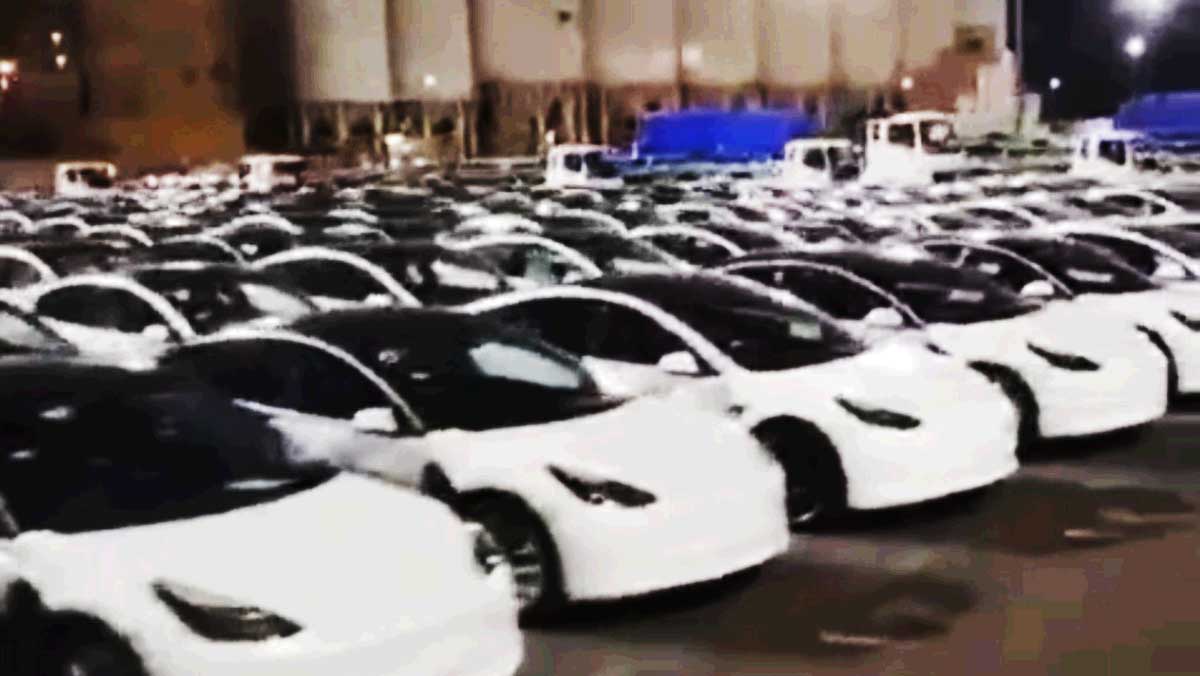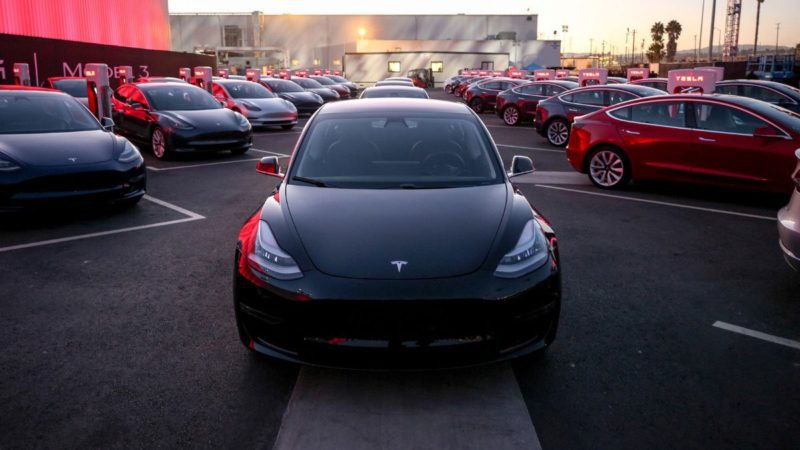Tesla shipped an estimated 1,500 Model 3 electric sedans to Australia in the month of May in what is shaping up as a record-shattering quarter for the EV maker, and for Australian electric vehicles in general.
The new cars – mostly Model 3s – have not been delivered, but will likely be in June. That shipment would give EVs a record 2 per cent share of the new car sales market and means it is fast approaching Toyota Corolla sales.
The so-called “army” of new Tesla Model 3s are lined up on the docks at Port Kembla in NSW. Just what that looks like was shared in a video in the Facebook group “Tesla Model 3 Australia” on Thursday, rather fittingly to “The Imperial March” song from Star Wars.

By the end of June, an estimated 5,000 electric vehicles will have been delivered to customers by Tesla in 2021. Added to an estimated 10,000 vehicles already shipped locally in previous years, this means that the first half of the year has increased Tesla’s fleet in Australia by a hefty 50 per cent.
By the end of 2021, Tesla has the potential to double its fleet, says Tesla ship tracker VedaPrime, who helps Tesla customers understand when their vehicles have arrived in the country.
“It’s massive growth,” he said in a note to The Driven.
“It is looking like growth of over 375% year on year if it continues this way for Tesla.”
Tesla already accounts for the majority of electric vehicles in Australia’s nascent EV fleet. It means that figures collected by the Federal Chamber of Automotive Industries (FCAI) which state that just 436 vehicles sold in May in Australia were battery-electric are wildly incorrect.
This is because Tesla does not report local sales figures to the FCAI.
Australia’s EV sales, with Tesla figures added into the mix, account for just 2% of May’s entire auto sales. This is still well below the global average of 4.6% according to the International Energy Agency.
Still, an EV market share of 2% is a new record for Australia. And of that 2% share, a rough three quarters are Tesla Model 3s. There is clearly growing interest in EVs in Australia, and the new $3,000 rebate in Victoria and the interest free loans in the ACT will be helping boost demand and purchases.
The popularity of the Model 3 cannot just be put down to brand loyalty, either. With its recent price drop bringing it down to $62,990 before on-roads, it sits well below the price of other respectable battery-electric models but with considerable technology advantages.
Even the “technology-agnostic” Car Expert underlined in a recent article that the Model 3 outdoes its competitors on specs, handling, braking, power, torque, efficiency and spaciousness.
Even more salient is the fact that if we equate shipping numbers to sales, the $62,900 Tesla Model 3 is fast approaching the sales of the omnipresent and segment-leading $23,900 Corolla of which Toyota sold 2,190 units in May.
And there is still the Model Y to come, possibly by later this year.

Bridie Schmidt is associate editor for The Driven, sister site of Renew Economy. She has been writing about electric vehicles since 2018, and has a keen interest in the role that zero-emissions transport has to play in sustainability. She has participated in podcasts such as Download This Show with Marc Fennell and Shirtloads of Science with Karl Kruszelnicki and is co-organiser of the Northern Rivers Electric Vehicle Forum. Bridie also owns a Tesla Model Y and has it available for hire on evee.com.au.

